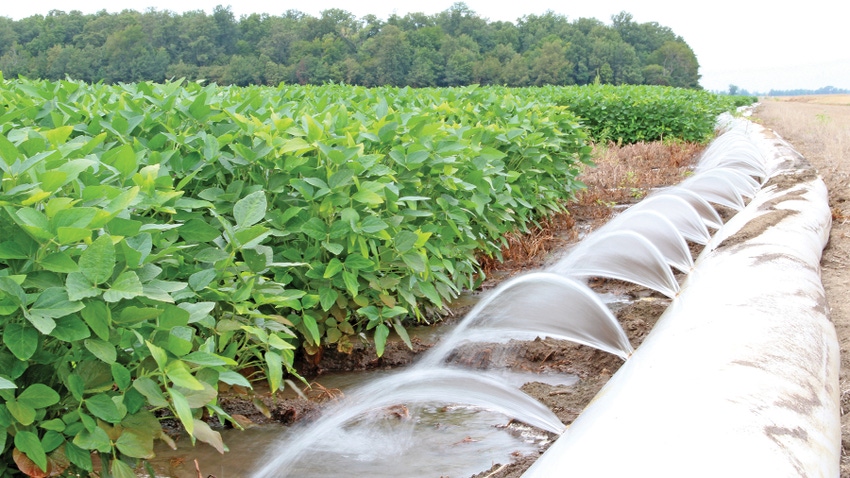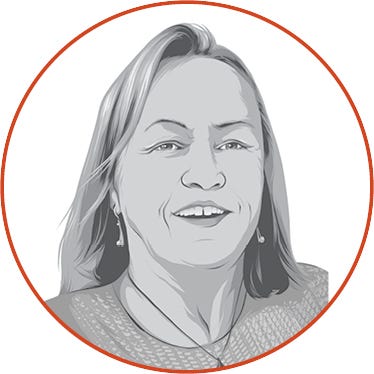
At a Glance
- Farmers seeing profit advantages in using soil moisture sensors
- Environmental benefit is 25% and higher water-use reduction
- On-farm benefit is spending less time and money on irrigation
It’s hard to see a profit that isn’t shown in a yield increase, requires buying additional equipment, and is discussed rather than displayed. Those situations create barriers to putting new technology to work in row crops.
Each of those factors once hindered adoption of soil moisture sensors and related water conservation technology, said Drew Gholson, Extension irrigation specialist at MSU’s Delta Research and Extension Center in Stoneville and director of the National Center for Alluvial Aquifer Research.
However, overcoming those barriers to adoption opens opportunities for higher profit and greater efficiency.
“We felt really confident that this was a tool that worked to reduce cost and maintain yield and profit,” Gholson said. “The challenge was helping farmers see the advantages.”
That’s why the Extension team at Mississippi State decided three seasons ago that they needed a more intensive program to spur wide-spread adoption of water conservation technology. And that’s why in 2023 more Mississippi farmers are employing water conservation practices in their fields.
New technology
The team defining the program worked on the premise that full adoption would require that farmers gain familiarity with the technology and the results.
“Financial support is available, but increasing adoption takes more than NRCS (National Resource Conservation Service) grant dollars,” Gholson said. “Users need additional help to set the system up correctly and troubleshoot once it’s in place. If they don’t get that support, they probably won’t use it after the contract period of that incentive program.”
Basically, Gholson said, when new technology is introduced a certain group of farmers will rush to adoption. Those farmers already were using water conservation technology when the team started looking at increasing adoption.
The team’s focus was on the next two groups: farmers who wait to see how the innovators fare with the new technology and those who need to see how it works in their field on their farm. That last group is the largest.
“We knew we needed to provide a season-long, one-on-one program that continued over multiple years,” Gholson said. The result was the Mississippi State University Advancing the Adoption of Soil Moisture Sensors.
Program adoption
In the sensor adoption program, participants work side-by-side with their local Extension agents and state irrigation specialists in their own fields for three years. Extension personnel are hands on the first year, close by the second year, and hands off the third year.
“We’re able to take the science behind why we should use this technology and put it in the hands of producers,” said Mississippi State University Extension Agent Alex Deason, who serves Sunflower County.
The program includes using soil moisture sensors to make irrigation decisions, implementing surge irrigation, and using computerized hole selection software, such as PHAUCET from USDA or Pipe Planner, a program provided to customers of Delta Plastics.
“Any time you can get a guy to put something in practice and they actually see it in the field rather than seeing it on the screen or hearing it in a meeting,” Deason said, “your adoption is going to be much higher.”
Deason knows. The first 25 farmers in the program finished their third year in 2022. Seven of those farmers were in Sunflower County. All seven of them intend to continue using the water conservation systems and more than half already started expanding the systems across their farm.
That’s when Deason said NRCS programs are highly valuable. “We’ve had numerous producers get involved in those cost-share programs,” he said. “Any of these practices, even outside of these computerized hole programs and sensors, are applicable and that’s a very valuable resource that’s offered.”
The most often response from those who participate, Deason said, is: “It’s so much simpler than what I thought.” The universal understanding is that the technology benefits their farm and offers lifestyle benefits.
Time and Money
The savings is found in what you do not do, Deason said.
“The problem with seeing the financial advantages on paper is it’s not money that you get back in return,” Deason said. “It’s money that never comes out of your pocket. If you save that one irrigation, that’s fuel that you didn’t have to burn to run that well. On your labor side, it’s one less time that you have to go out there. You have an open opportunity to do something different than run your irrigation. You can go watch your kids play ball. You can have supper with your family.”
The environmental benefit, Gholson reports, is farmers who participated in the program reduced water usage by 25% to 38%.
Experiencing those savings brings the advantages of the program home, Deason said.
“We’re still here at every step. They can call us to help troubleshoot,” Deason said. “Getting passed that troubleshooting is a lot easier this way and it’s a quicker path to adoption.”
Hearing about those advantages from a neighbor who was in the program also increases interest in the technology – and ultimately in the program.
“I don’t have to go out and find new people for the program,” Deason said. “We have a list. Eventually, we want everybody to experience this.”
About the Author(s)
You May Also Like






